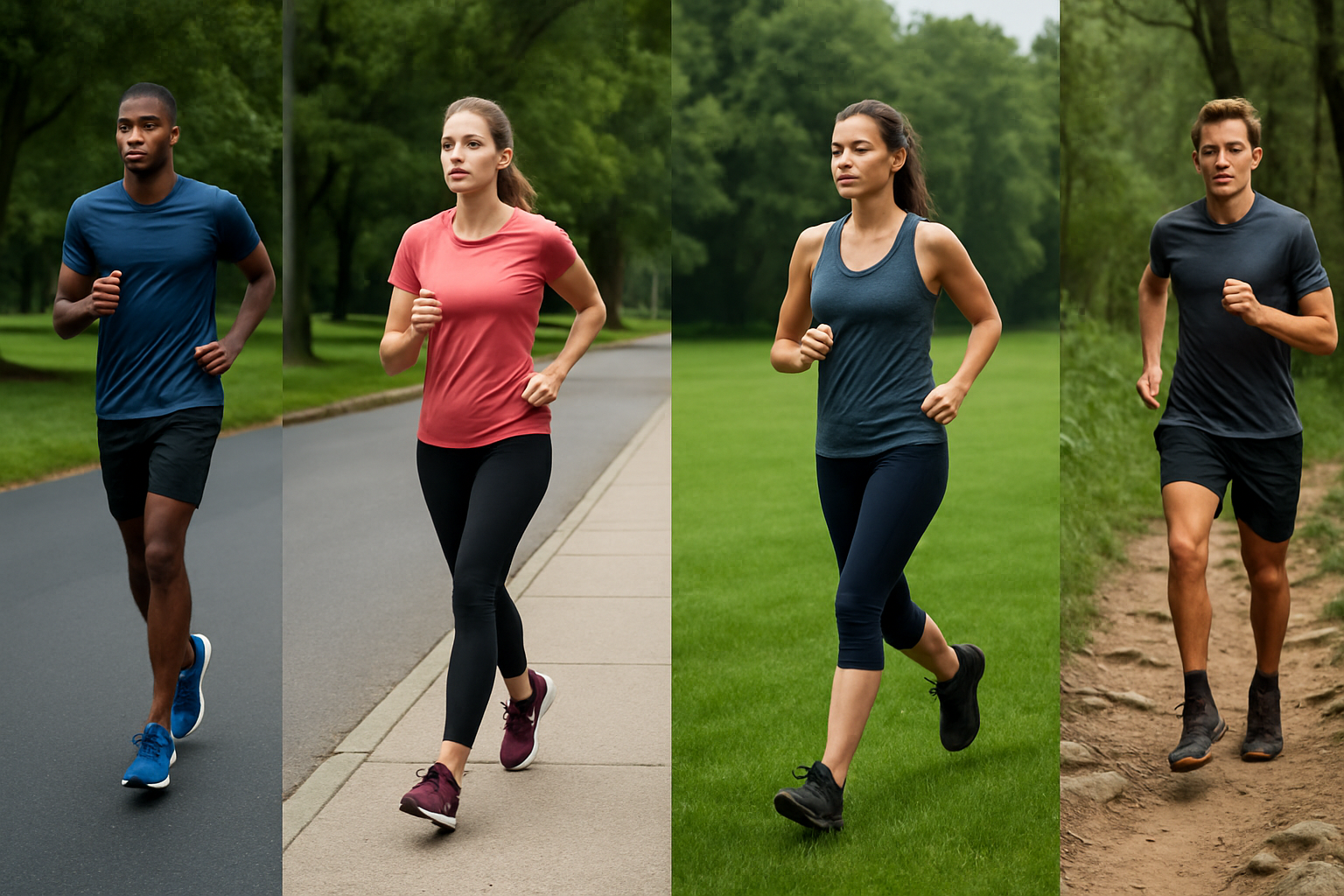When starting out as a runner, most people don’t think twice about where they run — they just head out the door. But the surface you run on can significantly impact your comfort, performance, and injury risk. Each terrain offers different challenges and benefits, and understanding how they affect your body is especially important for beginners.
In this article, we’ll break down the most common running surfaces and help you decide which is best for your goals, fitness level, and preferences.
Why Surface Matters for New Runners
As a beginner, your muscles, joints, and connective tissues are still adapting to the repetitive impact of running. The surface you choose can either ease that process — or make it harder.
Running surfaces affect:
- Shock absorption: How much impact your joints absorb with each step
- Stability: How even or uneven the terrain is
- Traction: How well your shoes grip the ground
- Muscle engagement: Different surfaces activate different stabilizing muscles
Let’s explore each surface, starting with the most common.
1. Asphalt (Roads)
Most common surface for urban runners
Pros:
- Widely available in neighborhoods and cities
- Predictable and consistent surface
- Good for measuring pace and progress
Cons:
- Hard surface = higher impact on joints
- Risk of overuse injuries if done too often
- Traffic and safety concerns
Best for:
Short to moderate runs, speed work, and regular training if no softer surfaces are nearby.
Tips:
- Wear cushioned running shoes
- Vary your routes to reduce repetitive stress
- Run facing traffic and use sidewalks when available
2. Concrete (Sidewalks)
One of the hardest surfaces you can run on
Pros:
- Accessible in most urban areas
- Safe from traffic
Cons:
- Extremely hard — up to 10x more impact than asphalt
- Increases risk of shin splints, stress fractures
- Often uneven due to cracks and curbs
Best for:
Walking or very short recovery jogs. Not ideal for regular running.
Tips:
- Use as a last resort
- Avoid frequent long runs on concrete
- Opt for asphalt, dirt, or grass when possible
3. Treadmills
Controlled and joint-friendly
Pros:
- Soft surface with shock absorption
- Controlled temperature and environment
- Useful for interval training or injury recovery
- Good for beginners who want privacy
Cons:
- Can feel monotonous or boring
- Less real-world variation (turns, hills, wind)
- May encourage unnatural stride if form breaks down
Best for:
Winter training, beginners easing into running, structured workouts.
Tips:
- Maintain upright posture and avoid leaning on the bars
- Gradually increase incline to simulate outdoor terrain
- Mix with outdoor runs for variety
4. Grass
Soft and gentle on the joints
Pros:
- Low-impact surface
- Engages stabilizing muscles
- Great for building strength and reducing injury risk
Cons:
- Uneven terrain increases risk of ankle rolls
- Slippery when wet
- May hide holes or rocks
Best for:
Recovery runs, beginner runs with soft effort, barefoot strides (for experienced runners).
Tips:
- Look for well-maintained parks or fields
- Run with shorter steps to maintain control
- Avoid if you have balance or ankle issues
5. Dirt Trails
A favorite for many experienced runners
Pros:
- Softer than roads
- Beautiful scenery can make runs feel easier
- Varied terrain builds strength and agility
Cons:
- Uneven surfaces increase fall risk
- Roots, rocks, and mud require attention
- Can be hard to access in urban areas
Best for:
Building strength, avoiding pavement stress, enjoying nature.
Tips:
- Invest in trail shoes for better grip
- Slow down your pace to avoid injury
- Focus on posture and mid-foot landing
6. Synthetic Tracks
Usually found at schools or stadiums
Pros:
- Even, consistent surface
- Great for speed work and intervals
- Soft, joint-friendly
Cons:
- Repetitive direction can stress one side of the body
- Mentally dull if you don’t enjoy loops
- Limited access in some areas
Best for:
Beginner intervals, controlled workouts, technique drills.
Tips:
- Change direction every few laps to reduce strain
- Don’t run too fast — track doesn’t mean sprint
- Use for form practice or short sessions
Comparing Running Surfaces
| Surface | Impact on Joints | Stability | Best Use |
|---|---|---|---|
| Asphalt | Medium-High | High | General training |
| Concrete | Very High | High | Short walks only |
| Treadmill | Low | Very High | Beginners, rehab, winter |
| Grass | Low | Low | Recovery, strength |
| Dirt Trails | Low-Medium | Low | Variety, nature runs |
| Track | Low | Very High | Speed drills, intervals |
How to Choose the Right Surface
As a beginner, consider the following:
- Are you recovering from injury? → Start with treadmill, grass, or track
- Do you live in a city? → Use asphalt and sidewalks carefully, mix in parks if possible
- Do you get bored easily? → Mix surfaces to keep it fresh
- Want to build strength? → Try trails or grass
- Limited time or bad weather? → Treadmill works well
There’s no perfect surface — the best one is the one you can use consistently and safely.
Tips for Running on Any Surface
- Warm up and cool down every time
- Use proper running shoes for your surface
- Focus on form, regardless of terrain
- Mix surfaces to balance impact and training benefits
- Listen to your body — adjust if you feel pain or discomfort
Final Thoughts on Running Surfaces for Beginners
The ground beneath your feet has more influence than you might think. Each surface has trade-offs, and variety can help you become a more resilient and well-rounded runner.
You don’t need to run on trails or tracks to be a “real” runner — you just need to find the surface that suits your life, body, and goals.
The most important thing? Keep running, wherever you are.
